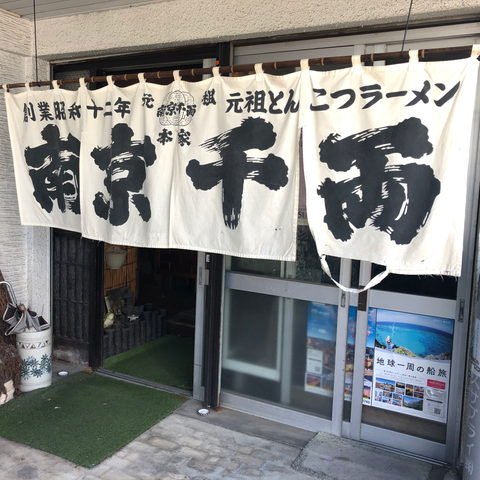The biggest reason I wanted to go to Tokyo before leaving Japan was this; a KINTSUGI class with Yoshiko-sensei.
Yoshiko-sensei has extensive knowledge of ceramics, from making new creations from clay, to fixing broken pieces with KINTSUGI. She teaches classes in both at her studio.
You can see her past KINTSUGI repair work for our rice pot lid here:
https://www.abokichi.com/blogs/news/kintsugi-the-art-to-fix-broken-pottery-and-reuse
Because of COVID, they had a plastic curtain set up between us, but Yoshiko-sensei and Yoshiichiro-sensei were really nice and it was easy to understand.
First, I thought I need to bring broken pottery, so I brought a small plate from my parents' house. If you don't have such an item when traveling to Japan, don't worry, they have broken antique pottery for you to fix. The studio has an arrangement with some antique shops so there is a steady supply of broken pottery for their students to fix. You get to choose from old pottery that dates back to the Edo and Meiji eras.

I picked a cup that I liked, and here is the broken plate from my parents' house.

The first step is making the missing part with glue-clay. There are two materials which you knead together, mixing the dark chemical and white part well, and stick it on to the missing part of your ceramic, like a dentist filling in a cavity. After you knead the material, you need to move fast before it gets too hard to work on, about 10 minutes.

Next is glazing.

We used a waterproof sand paper too.

And then mix the brass powder and lacquer.

And then brush it on the chipped part.
Finally, you kinds blast the powders on it.
And this is the final result! Yay!

Yoshiko-sensei says that KINTSUGI is good for your mental health too. Sometimes people feel that they are broken as a person, but it is not the end. By doing KINTSUGI, they feel they can re-create the 'broken' things to something better. As a metaphor, the message that KINTSUGI gives you is extremely positive. And I felt good after I did it too.
As a consumer and a food entrepreneur, sometimes I feel the sense of anti-consumerism. The rise of minimalists, really frugal people from the FI/FIRE movement, local food movement, and enthusiasm for artisanal products are based on a similar feeling, I think. They are choosing their lifestyle for different reasoning, logic and motivation, but they can all agree to be conscious consumers. It is the feeling of wanting to make thoughtful purchases, or to treat products or money really carefully. I don't think we will stop buying things, but we will buy things more carefully and consciously. So, if I am going to buy new pottery, I will think like this. "Would I want to fix this pottery with KINTSUGI if it ever broke?"
KINTSUGI made me think about what kinds of products we want to produce as the brand, Abokichi, and concluded that the products we make should be chosen by consumers consciously.
You can visit Yoshiko-sensei and Yoshiichiro-senisei here.
Kuge Kraft
Website: https://www.teshigotoya-kuge.com/
Instagram: @yoshikokuge
Email: info@teshigotoya-kuge.com | kankuro.shu@gmail.com (English)
Phone: 166−0015東京都杉並区成田東1−34−10
Address: 1-34-10 Narita-higashi, Suginami-ku, Tokyo 166‑0015




